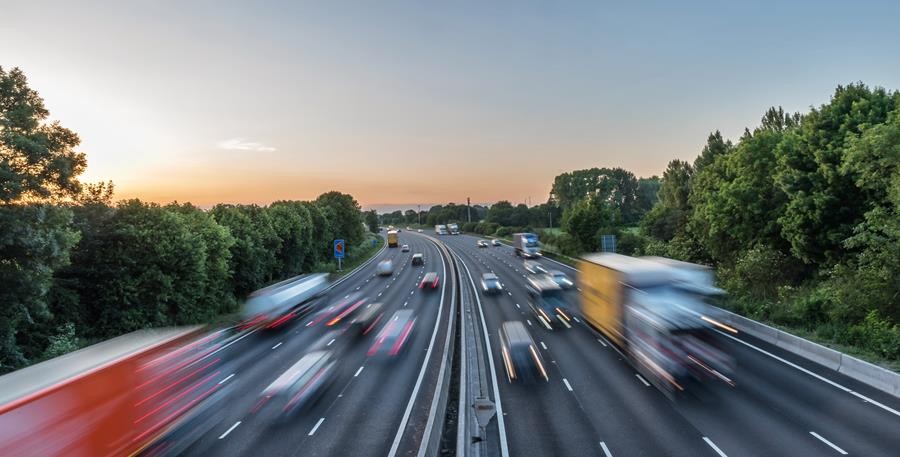
Susie Jones
Пътят към устойчивостта: Предизвикателството на европейските емисии в транспортния сектор
Създаден: 08.08.2024
•
Актуализирано: 08.08.2024
В доклад за 2024 г. на Clean Technica се разкрива, че над 25% от емисиите от пътния трафик се дължат на транспортния сектор в Европа, като тежкотоварните превозни средства са отговорни за 85% от емисиите (останалата част се пада на градските и междуградските автобуси).
При сегашното темпо само транспортният сектор ще представлява почти половината от емисиите на парникови газове в Европа през 2030 г. - емисиите от транспорта в Европа продължават да се увеличават с повече от една четвърт от 1990 г. насам. Емисиите в цялата икономика са намалели - въпреки това, след пика през 2007 г., транспортният сектор се декарбонизира повече от три пъти по-бавно (https://www.transportenvironment.org/articles/europes-transport-sector-set-to-make-up-almost-half-of-the-continents-emissions-in-2030) от останалата част на икономиката.
Каква е причината за увеличаването на емисиите на CO2 в транспортната индустрия?
След разпространението на електронната търговия и услугите за доставка по домовете търсенето на повече камиони по пътищата се увеличи значително. Вследствие на това повишеното търсене доведе до увеличаване на емисиите на CO2 в сектора на товарните превози.
Доклад на Clean Technica относно тонажа на вътрешните товарни превози по различни видове транспорт (автомобилен, железопътен и воден) разкри, че автомобилните товарни превози са по-доминиращи в Европа, отколкото железопътните и водните, в сравнение с други географски райони (САЩ и Индия). Въпреки че Китай е по-зависим от автомобилния товарен транспорт, докладът разкри, че страната разполага с около 600 000 електрически камиона за доставка на стоки.

Какви планове има в Европа за намаляване на емисиите на CO2?
Европейският парламент прие Европейския закон за климата, за да се справи с нарастващите емисии на CO2. Като част от този закон целта на ЕС за намаляване на нетните емисии на парникови газове до 2030 г. беше увеличена на поне 55 % - което прави климатичната неутралност до 2050 г. правно обвързваща.
През май 2024 г. страните от ЕС одобриха закон за намаляване на емисиите на CO2 от камиони. Новият закон ще изисква новите тежкотоварни автомобили, продавани в ЕС от 2040 г., да не отделят емисии, като същевременно ще наложи 90% намаляване на емисиите на CO2 от новите тежкотоварни автомобили до същата година. Производителите трябва да продават голямо количество тежкотоварни превозни средства, които не отделят емисии на CO2 - например електрически превозни средства и превозни средства с водородно гориво - за да компенсират останалите продажби на превозни средства, отделящи емисии на CO2.
Какви действия могат да предприемат мениджърите на автопаркове, за да намалят емисиите на CO2?
Мениджърите на автопаркове могат да предприемат мерки за намаляване на своите емисии на CO2:
Рязкото спиране, бързото ускоряване и работата на празен ход могат да увеличат разхода на гориво и емисиите на парникови газове - Въпреки че наблюдението на поведението на водача може да бъде предизвикателство, технологията с изкуствен интелект може да осигури непрекъсната обратна връзка на водачите и мениджърите на автопаркове. Научете повече за това как ИИ може да окаже положително въздействие върху устойчивостта в транспортната индустрия.
Автопарковете с по-стари превозни средства могат да преминат към хидротретирани растителни масла (HVO), водородни или електрически тежкотоварни превозни средства, за да намалят значително емисиите. Мениджърите на автопаркове обаче трябва да вземат предвид разстоянието, което превозните средства с алтернативно гориво могат да изминат, и последиците за разходите.
SNAP Account позволява на мениджърите на автопаркове да намалят пробега си по обиколни маршрути - с над 600 сервизни партньори, достъпни за клиентите на SNAP Account, мениджърите на автопаркове могат да планират нощни престои за своите шофьори по маршрута.
Има ли инфраструктура за зареждане на електрически тежкотоварни автомобили?
Според проучване на PwC до 2030 г. една трета от всички камиони в Европа ще бъдат електрически. Тъй като компаниите за автопаркове предприемат стъпки към електрификация, спирките за камиони в Европа трябва да могат да посрещнат търсенето на електрически зарядни станции.
Осигуряването на инфраструктурата ще бъде свързано с разходи за много спирки за камиони и бензиностанции. Въпреки това тези, които вече разполагат със зарядни устройства за електрически автомобили, са в добра позиция да се възползват от бъдещите вълни от електрически камиони. До 2030 г. обществените зарядни станции в Европа ще нараснат до над 3600 - ЕС предложи амбициозен закон за зареждането с Регламента за инфраструктурата за алтернативни горива (AFIR). AFIR планира да оборудва главната пътна мрежа със зарядни пунктове на всеки 60 км - осигурявайки достатъчно енергия за зареждане и водороден капацитет, за да може до 2030 г. 9% от автопарковете от камиони и автобуси да бъдат с нулеви емисии.
В коя европейска държава има най-много емисии на CO2?
През 2021 г. Германия, Франция и Италия са отговорни за най-високите общи емисии на парникови газове (ПГ) - в диапазона от 375 000 до 740 000 хил. тона CO2. Държавите с по-голямо население обаче произвеждат повече емисии на парникови газове - следователно разглеждането на общите емисии на парникови газове дава изкривена представа.
Безпристрастният поглед върху емисиите дава различна перспектива - през 2021 г. Люксембург, Ирландия и Чешката република са произвели най-много емисии на глава от населението в ЕС.
Кой е най-екологичният начин за транспортиране на стоки?
Транспортирането на стоки с железопътен транспорт е един от най-екологичните видове транспорт, но той предоставя и други предимства:
Намалява задръстванията по пътищата, което допринася за подобряване на качеството на въздуха.
Железопътният транспорт предлага по-бърз начин за транспортиране на стоки и премахва тежките препятствия пред трафика.
Камионите с алтернативно гориво са друг екологичен начин за транспортиране на стоки. Хидроочистеното растително масло (HVO) може незабавно да намали до 90% от парниковите емисии в сравнение със стандартния дизел през целия жизнен цикъл на продукта. Certas Energy HVO стои зад прехода към по-чиста алтернатива - помага на бизнеса да постигне целите си за устойчивост и да предприеме значими стъпки към своето нетно нулево бъдеще.



